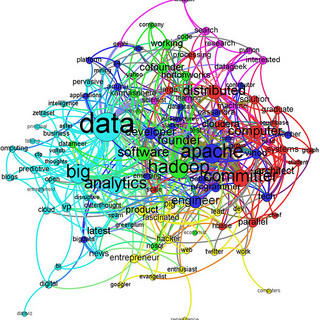
The industry has reached an inflection point in our thinking about data. It’s no longer about slicing and dicing data sets; it’s now about creating insights.
I recently had the opportunity to speak with Steve Mills, who’s on the data science team within the strategic innovation group at Booz Allen Hamilton, the giant consulting firm. As a company that covers all domains—health, financial services, defense and more— it has a view across all sectors to see unique trends and challenges that are emerging, and the company can cast its view beyond the horizon to see what’s coming next.
Mills said there are four things he’s seeing in Big Data:
1. Companies will have to improve how they manage talent and grow skills for the analytic workforce of the future.
2. Companies will have to cope with changes around the platforms and technologies upon which they’re grown reliant.
3. The monetization of analytics. Data was king, but now, without analytics, it’s somewhat useless.
4. Visualization becomes a key component as we move into a world of data analytics.
Data science advances, along with the cloud, are transformational things for many organizations, Mills said. This creates a need for a workforce with a fundamentally new set of skills. “It’s no longer just about extracting data, or slicing and dicing it, or running SQL queries,” he said. “It really becomes about creating insights from data. And all that requires kind of this new way of thinking. There’s obviously the new technical skills, but also a new way of thinking about all this.”
At the end of the day, Mills said, there are three ways that organizations can get that talent: outsource for it, hire it, or train existing staff. He said Booz Allen Hamilton encourages the training route. “There’s a lot of value when a company can have their own core team. Frankly, there’s a benefit for us as well when we’re working with knowledgeable people on the client-side who understand the infrastructure and can help implement it,” he explained.
“So, what we tell people is build your core team, and supplement it with consultants and outside expertise. That leaves you with hire them or train them,” he continued. “I think we can all accept that hiring is a challenge. We’re in the midst of this talent war, and all organizations are challenged to find staff with these new skills. So really, it’s about how do you take your current workforce and people with the right aptitude and the right foundational skills and teach them everything you need to know… We made the decision that we need to create a product that our clients can get access to as well with the goal being to educate the workforce of tomorrow—ours and theirs. There are people struggling to get these new skills, and we wanted to provide a tool to help them get there.”
As for the monetization of data, Mills said, “People are realizing that without asking questions of data, without running analytics across it, it’s in some ways useless. The value really comes out when you ask questions of data. We’re seeing this move toward where the output of analytics is actually becoming what has value. And visualization is really becoming a key component as we move out into this world of analytics.”
The visualization piece is critical for organizations that need to present all the knowledge and insights gained from collecting all this data in a way that business executives can easily consume and comprehend.
“We need to make all this output accessible to the business users via these clean, understandable visualizations,” Mills said. “But with all of that come some challenges. We don’t want these things just to become a business intelligence dashboard. We want to give them that rich, interactive experience where they can interact with the data and build their own intuitive understanding of what’s happening. They might not know all the nuts and bolts of the algorithms, and they don’t need to, but they need to get that comfort factor and intuitive understanding in what’s happening. I think that’s why we’re seeing this rise of UX and packages like D3 (an open-source data visualization package) that can give you that kind of interactive, rich experience.
“As we’re doing this, if we insulate the end user too much from all the richness of the analytics, and boil it down a little bit too much, you can lose some of the richness that can be there.”




